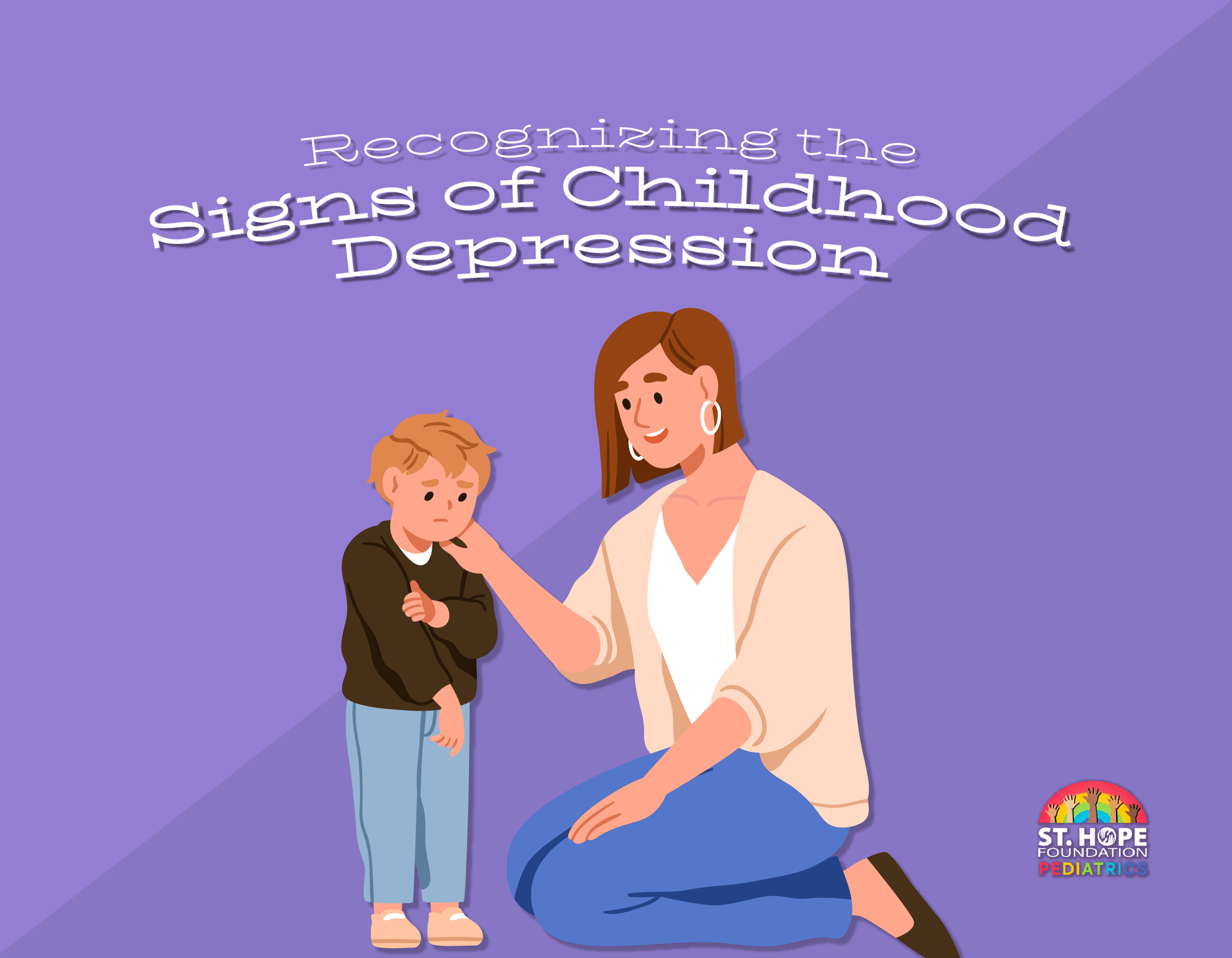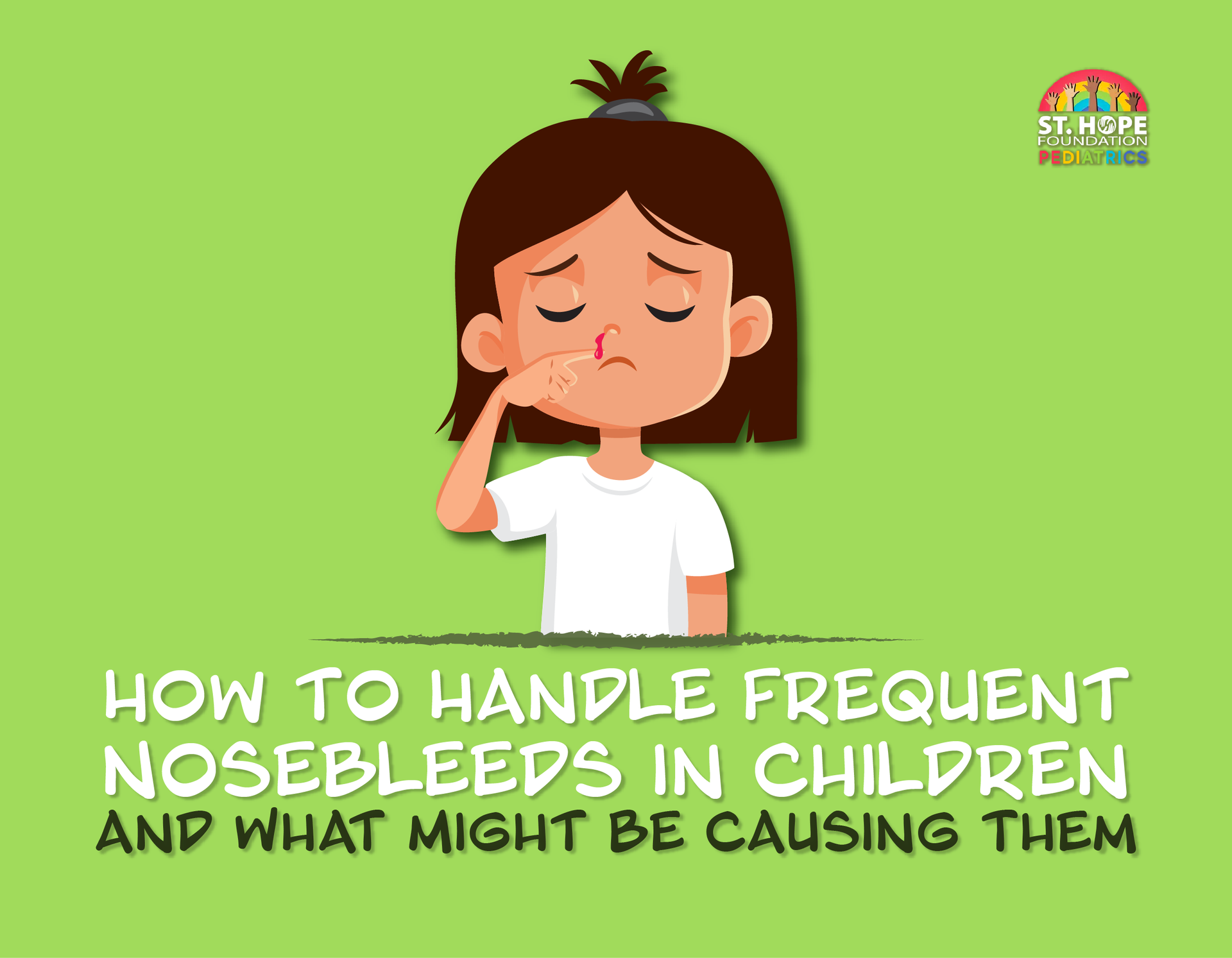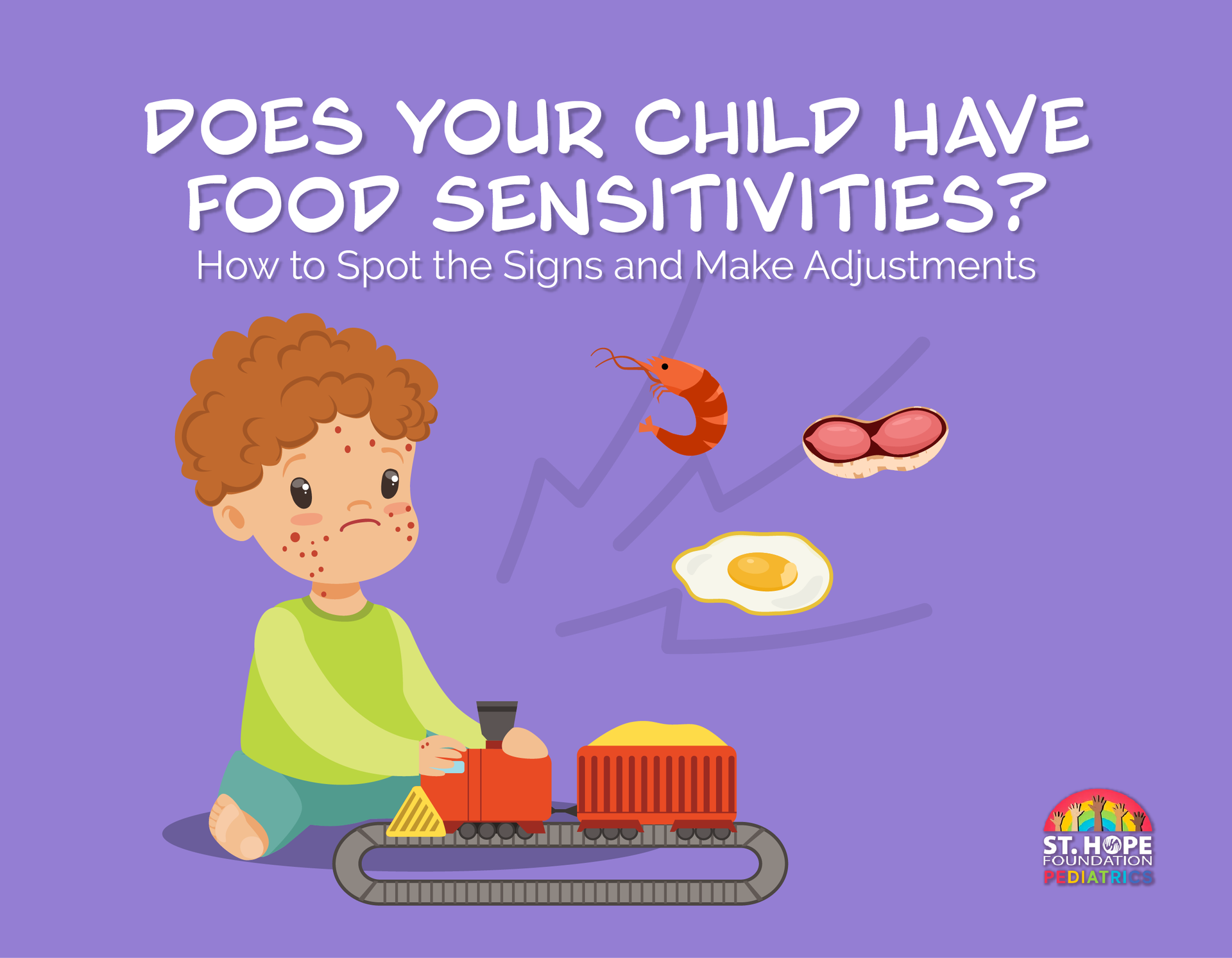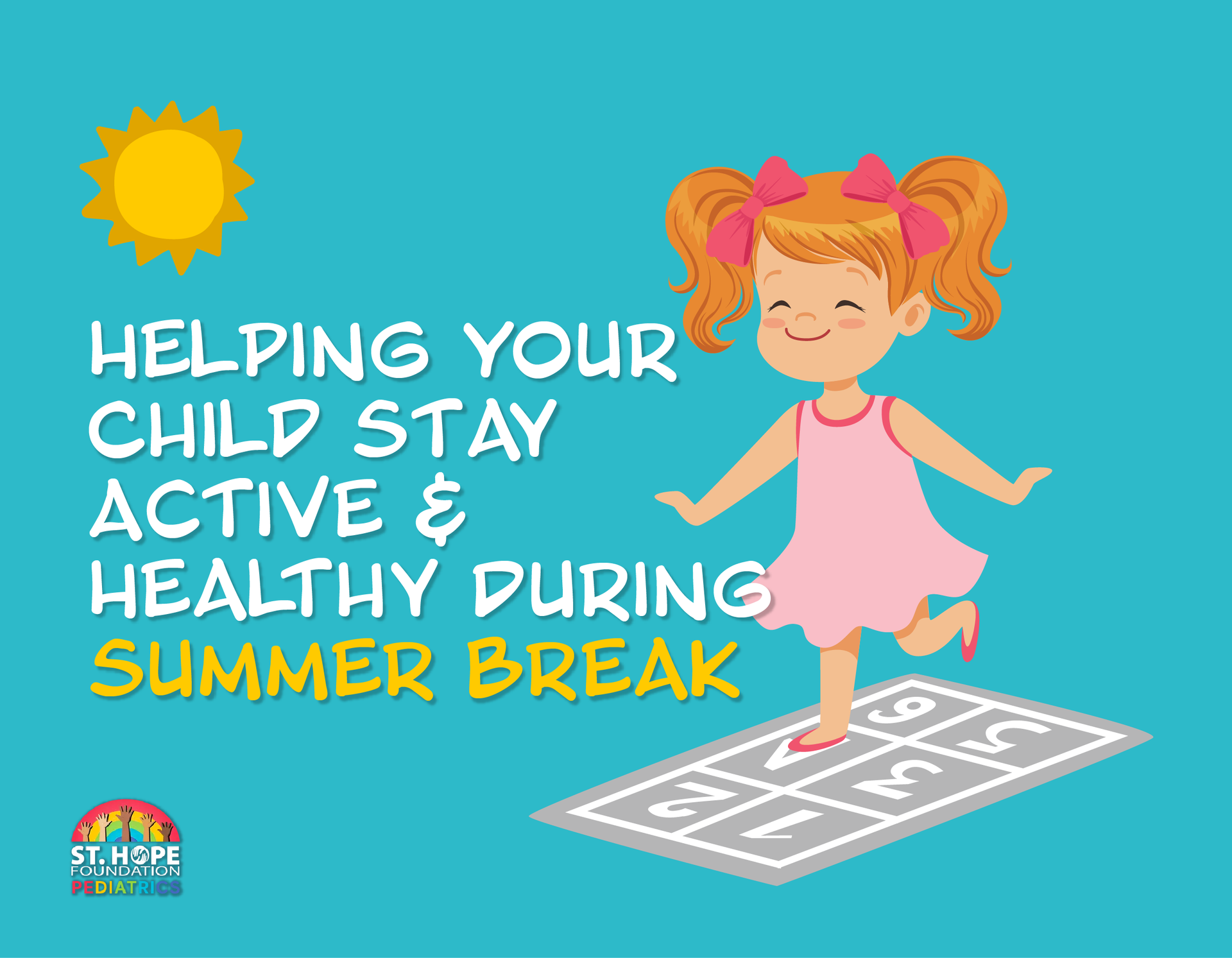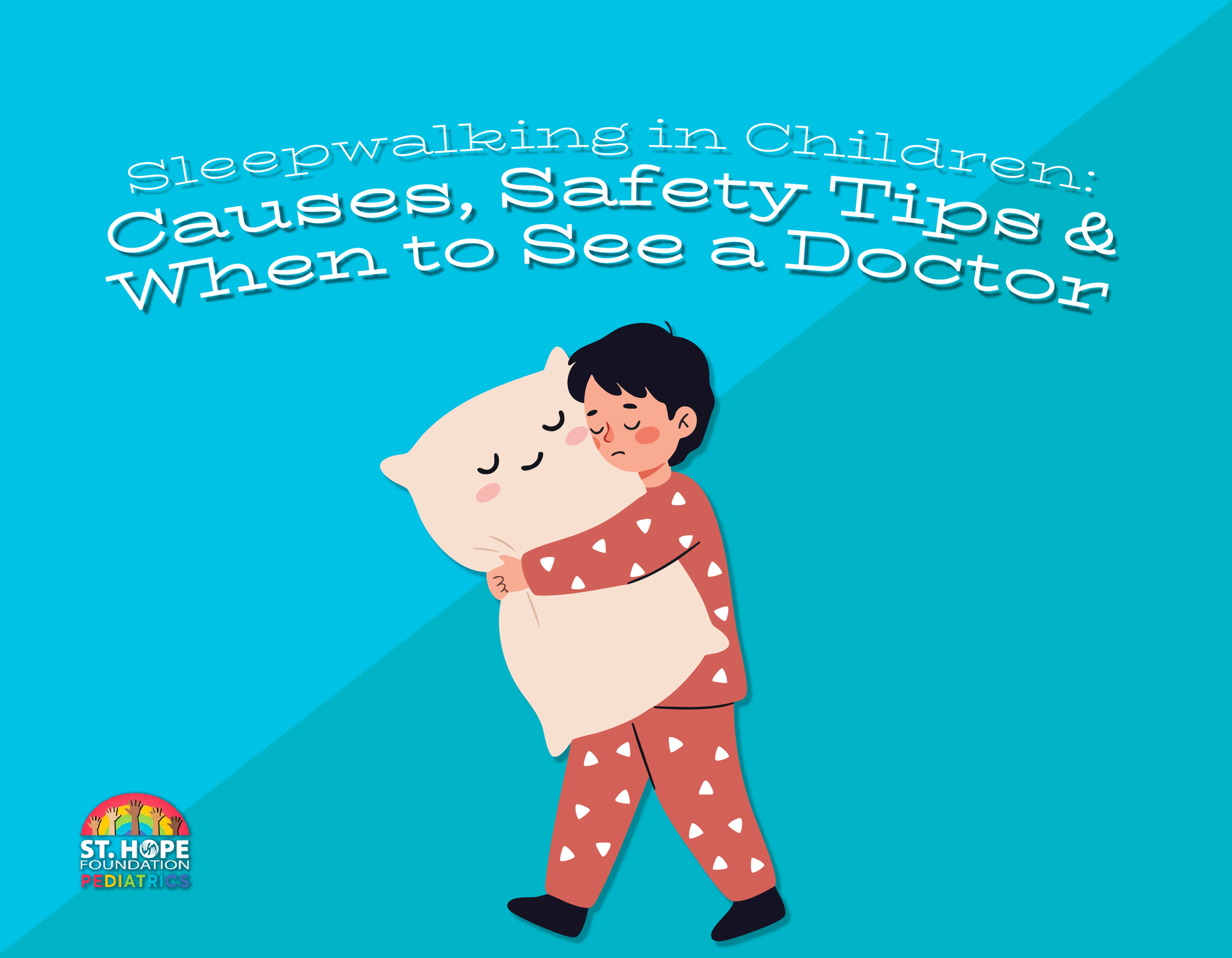
Waking up to find your child wandering through the house in the middle of the night can be unsettling. Sleepwalking, or somnambulism, is more common in children than most parents realize and is typically harmless and temporary. However, it can potentially signal an underlying sleep issue that needs attention.
Understanding Sleepwalking
Sleepwalking occurs during the deep stages of non-REM sleep, typically within the first few hours after a child falls asleep. During these episodes, a child may sit up, walk around, mumble or perform routine tasks like opening doors or moving objects, all while remaining asleep.
Most children who sleepwalk have no memory of the event the next morning. Although it can look alarming, sleepwalking itself is usually not a sign of a serious medical condition. It often appears between the ages of 4 and 12, and many children outgrow it by their teenage years.
Common Causes of Sleepwalking in Children
You would think, with so many advancements in medicine, that doctors would have unraveled all the mysteries of sleep. After all, every person spends roughly a third of their life doing it.
Despite its outsized importance in the human experience, there are still many mysteries about sleep that haven’t been solved.
Sleepwalking is one of them. Evidence suggests a variety of factors may contribute to sleepwalking, but it can be difficult to pinpoint the exact cause.
- Sleep deprivation: Lack of sufficient rest is one of the most common triggers. When a child is overtired, the brain may not transition smoothly between sleep cycles, leading to partial arousal during deep sleep.
- Stress or anxiety: Major life changes, school pressure or emotional stress can disrupt sleep patterns and contribute to nighttime behaviors like sleepwalking.
- Illness or fever: A high fever can sometimes trigger sleepwalking episodes because the brain’s sleep regulation becomes temporarily disrupted.
- Genetics: Sleepwalking often runs in families. If one or both parents experienced it as children, their child may be more likely to develop the same behavior.
- Medications: Certain medicines, especially those that affect the central nervous system, can increase the risk of sleep disturbances.
- Other sleep disorders: Conditions such as sleep apnea, restless leg syndrome or night terrors can also play a role in triggering episodes.
What Sleepwalking Looks Like
Sleepwalking behavior varies widely from one child to another. Some may simply sit up or walk around their room, while others may wander through the house or even attempt to go outdoors. Common signs include:
- Blank or glassy-eyed expression
- Difficulty waking the child during an episode
- Confused behavior if they are awakened
- Talking or mumbling during the event
- Performing routine activities such as dressing, eating or moving objects
Episodes can last anywhere from a few seconds to half an hour. If sleepwalking is being caused by a specific trigger, like a fever or medication, it may only occur temporarily. For children who are prone to sleepwalking, episodes can vary. Some may sleepwalk only occasionally, while others may sleepwalk several times a week.
Is It True That It’s Dangerous to Wake a Sleepwalker?
Waking a sleepwalking child does not cause harm. The concern is simply that they may be confused, disoriented or startled, which can lead to accidental injury. Because of that, the recommended approach is:
- Guide them gently back to bed if possible.
- Wake them only if you need to for safety (e.g., stairs, doors, kitchen).
There’s no medical danger in waking them. The risk is just practical: a disoriented child can trip, swing their arms or panic briefly.
Safety Tips for Parents
If your child sleepwalks regularly, it makes sense to take some steps to prevent accidental injuries.
- Avoid bunk beds: Children who sleepwalk are safer in lower beds to prevent falls.
- Establish a calming bedtime routine: A predictable, relaxing nighttime schedule helps promote better-quality sleep.
- Ensure regular sleep patterns: Going to bed and waking up at the same time every day reduces fatigue-related sleepwalking.
- Avoid waking the child during an episode: Although not medically dangerous, waking them can cause confusion and agitation, and they could accidentally hurt themselves or you. Gently guide them back to bed if it’s safe and possible.
- Keep the floor clear. Keep hallways and bedrooms free of floor clutter that could cause trips or falls.
- Reduce nighttime noise and light. A quiet, dark sleep environment supports deeper, more restful sleep.
When to See a Pediatrician in Houston and Sugar Land
While sleepwalking in children is usually harmless, there are times when it should be discussed with a healthcare professional:
- Episodes happen frequently or become more severe over time.
- Your child leaves the house or does anything that could lead to injury.
- The sleepwalking is accompanied by night terrors, bedwetting or breathing difficulties.
- Your child acts violently during an episode or poses a risk to themselves or others.
- They show daytime sleepiness, mood changes or learning problems due to poor-quality sleep.
A pediatric evaluation may include reviewing your child’s sleep patterns, stress levels and family history. In some cases, your doctor may recommend a sleep study to monitor nighttime brain activity and identify possible triggers.
If an underlying condition, such as sleep apnea or anxiety, is discovered, treating it often helps reduce or eliminate sleepwalking entirely.
Call St. Hope Healthcare Pediatrics at (713) 778-1300 to schedule an appointment if you have concerns.

